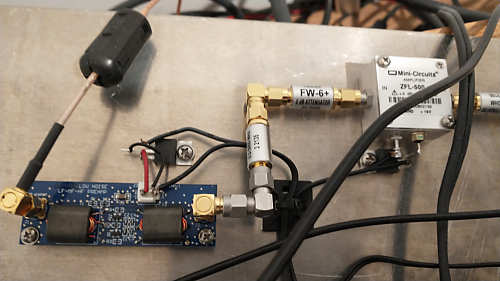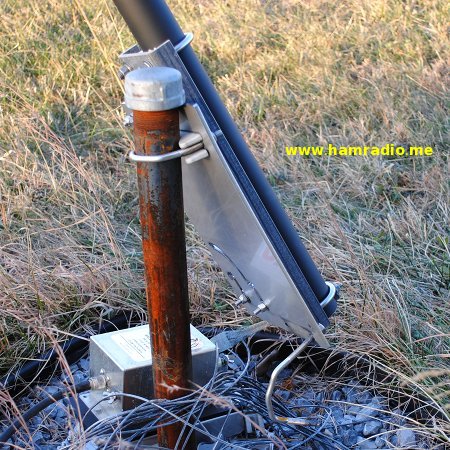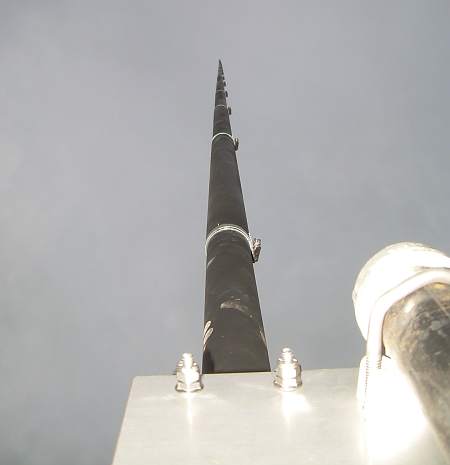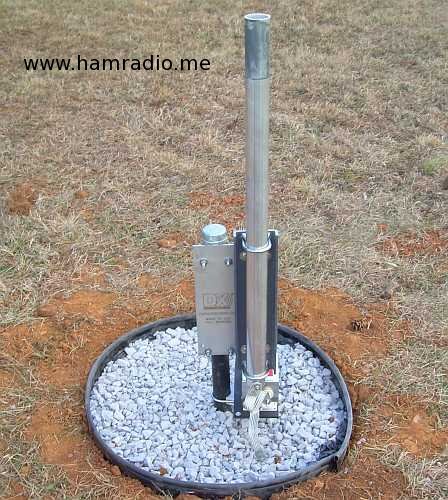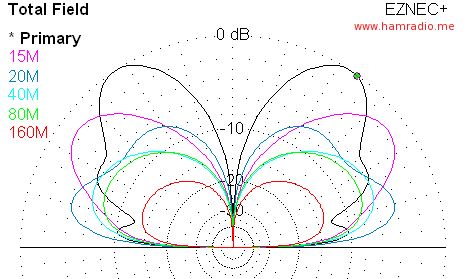Another title might be… “43 Foot Antenna, the Tilting.”
NOTE: UPDATE AT END OF THIS POST
We had a big blast of cold air come down from Canada last night. Temperatures reached the teens and winds peaked at 50 mph. No problem I thought… “My DX Engineering 43 Foot Vertical has been up in weather like this since 2008 and does exceptionally well.”
The morning was busy gathering up blown away things and mounting a search and rescue of my car cover. Often this car cover sweeps around the house so I walked out back.
My eyes scanned the back yard for the cover. HORROR! I looked up to see a not so vertical antenna against the December backdrop of a cornfield and morning sky. Figure 1 reveals my shock and awe moment…
